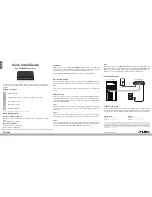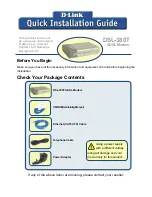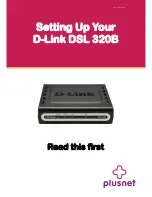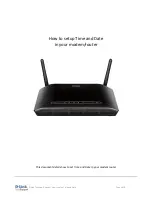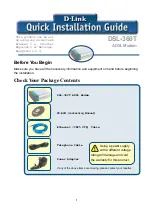
Chapter 10 The NAT Configuration Screens
User’s Guide
116
1
Jane requests a file from the Real Audio server (port 7070).
2
Port 7070 is a “trigger” port and causes the WiMAX Modem to record Jane’s
computer IP address. The WiMAX Modem associates Jane's computer IP address
with the "incoming" port range of 6970-7170.
3
The Real Audio server responds using a port number ranging between 6970-7170.
4
The WiMAX Modem forwards the traffic to Jane’s computer IP address.
5
Only Jane can connect to the Real Audio server until the connection is closed or
times out. The WiMAX Modem times out in three minutes with UDP (User
Datagram Protocol), or two hours with TCP/IP (Transfer Control Protocol/Internet
Protocol).
Two points to remember about trigger ports:
1
Trigger events only happen on data that is coming from inside the WiMAX Modem
and going to the outside.
2
If an application needs a continuous data stream, that port (range) will be tied up
so that another computer on the LAN can’t trigger it.
10.5 ALG
Some applications, such as SIP, cannot operate through NAT (are NAT un-
friendly) because they embed IP addresses and port numbers in their packets’
data payload.
Some NAT routers may include a SIP Application Layer Gateway (ALG). An
Application Layer Gateway (ALG) manages a specific protocol (such as SIP, H.323
or FTP) at the application layer.
A SIP ALG allows SIP calls to pass through NAT by examining and translating IP
addresses embedded in the data stream.
Summary of Contents for MAX-306M1
Page 2: ......
Page 8: ...Safety Warnings User s Guide 8...
Page 10: ...Contents Overview User s Guide 10...
Page 24: ...List of Figures User s Guide 24...
Page 30: ...30...
Page 63: ...63 PART II Basic Screens The Main Screen 38 The Setup Screens 65...
Page 64: ...64...
Page 72: ...72...
Page 84: ...Chapter 7 The LAN Configuration Screens User s Guide 84...
Page 96: ...Chapter 8 The WAN Configuration Screens User s Guide 96...
Page 108: ...Chapter 9 The VPN Transport Screens User s Guide 108...
Page 118: ...Chapter 10 The NAT Configuration Screens User s Guide 118...
Page 130: ...130...
Page 148: ...Chapter 12 The Service Configuration Screens User s Guide 148...
Page 158: ...Chapter 13 The Phone Screens User s Guide 158...
Page 164: ...Chapter 14 The Phone Book Screens User s Guide 164...
Page 166: ...166...
Page 188: ...Chapter 15 The Certificates Screens User s Guide 188...
Page 198: ...Chapter 16 The Firewall Screens User s Guide 198...
Page 218: ...Chapter 19 QoS User s Guide 218...
Page 234: ...Chapter 20 The Logs Screens User s Guide 234...
Page 247: ...247 PART VI Troubleshooting and Specifications Troubleshooting 249 Product Specifications 257...
Page 248: ...248...
Page 256: ...Chapter 22 Troubleshooting User s Guide 256...
Page 264: ...Chapter 23 Product Specifications User s Guide 264...
Page 266: ...266...
Page 298: ...Appendix B Setting Up Your Computer s IP Address User s Guide 298...
Page 308: ...Appendix C Pop up Windows JavaScripts and Java Permissions User s Guide 308...
Page 352: ...Appendix E Importing Certificates User s Guide 352...
Page 354: ...Appendix F SIP Passthrough User s Guide 354...
Page 370: ...Appendix I Customer Support User s Guide 370...
Page 376: ...Index User s Guide 376...































